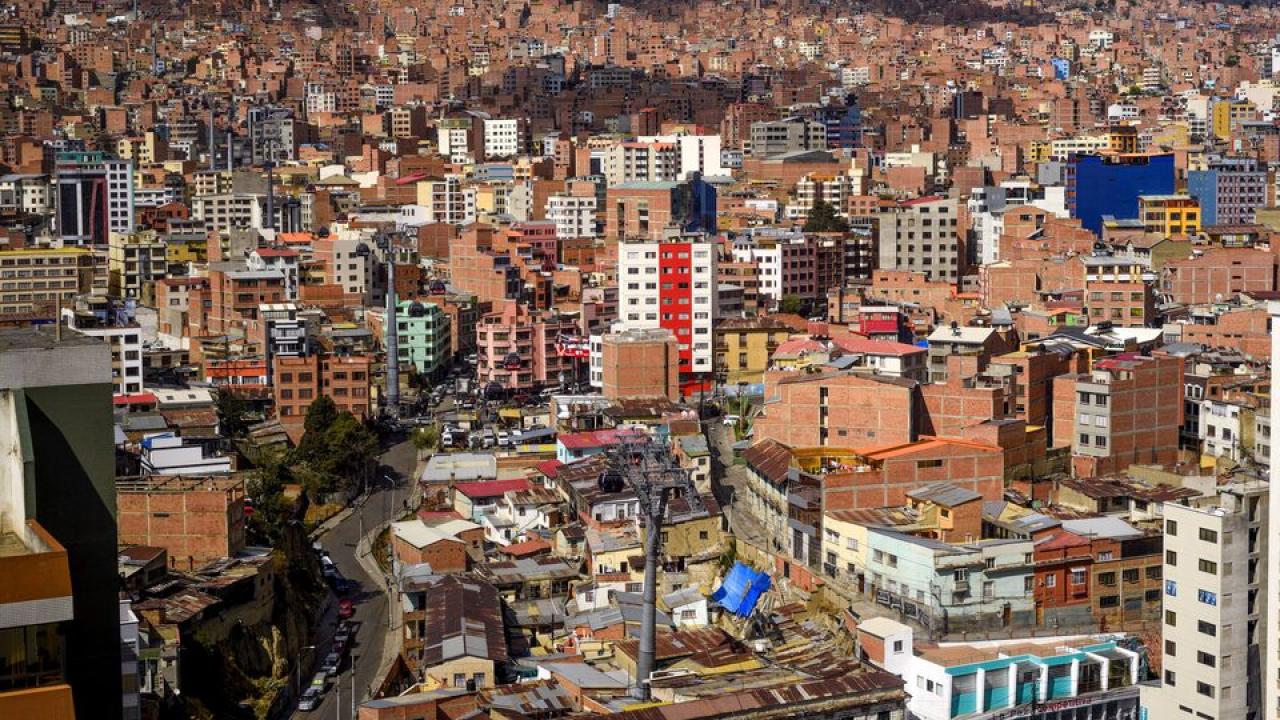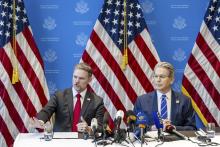
The Bolivian currency has had a fixed exchange rate since 2011, despite the shortage of foreign currency and international reserves. Meanwhile, Peru and Chile maintain more flexible models that allow them to avoid crises of this nature.
Bolivia welcomed its election year with shocking news: the country's Central Bank announced on Thursday that it will maintain the exchange rate at 6.96 bolivianos per dollar. In this way, the monetary entity is sticking to its guns, despite the shortage of US currency, basic necessities and fuels in the last year.
“During this administration we will maintain the exchange rate policy as we have been doing in recent administrations,” said Edwin Rojas, president of the Central Bank of Bolivia. We are talking about a country that has maintained a fixed exchange rate since 2011, when the government of Evo Morales adopted the measure to control inflation in the long term.
At that time, natural gas exports were driving the Bolivian economy, to the point that in 2014, international reserves exceeded US$ 15 billion. However, a decade later, the outlook is grim: international gas prices are at low levels and its neighbors, Brazil and Argentina, have reduced their demand in recent years.
In September 2024, Bolivia even officially ended mandatory gas deliveries to its southern neighbor, due to Argentina's commitment to national fields such as the Vaca Muerta project.
While the sale of the remaining gas to the Brazilian market was expected at “competitive prices”, there are almost no new exploration projects for deposits and the international reserves speak for themselves: in December, Bolivia closed with US$ 1.976 billion. This represents a modest advance of US$ 267 million, compared to the figures for the end of 2023.
Rojas attributed this small recovery to the export revenues of the state-owned company Yacimientos Petrolíferos Fiscales Bolivianos (YPFB) for US$ 1,879 million, as well as the policies of the Central Bank that include the purchase of gold and the issuance of bonds in foreign currency for US$ 268 million.
Meanwhile, the shortage of dollars is hampering the survival of the model, as well as the import of fuel, while fuelling the smuggling of goods to Peru and Brazil. Given this scenario, it is worth asking what the monetary policies of Bolivia's neighbours are like and how they have performed in recent years.
For example, Chile maintains a floating exchange rate. This means that the value of the dollar moves freely, because the Central Bank never intervenes in the exchange market. Although this system allows for a transparent monetary policy and high flexibility for external shocks, the Chilean peso is vulnerable to large fluctuations influenced by the national situation or external economic factors.
A clear example is the Global Financial Crisis of 2008-2009, when the price of copper, Chile's flagship export product, fell abruptly. The peso depreciated by more than 30% against the dollar, going from 460 pesos to more than 650 pesos in 2009. The Central Bank then had to intervene by buying dollars to stabilize the currency.
A similar trend occurred between 2014 and 2016, when global demand for copper fell and prices followed suit. As a result, the Chilean peso depreciated, reaching around 730 pesos per dollar at the end of 2015. Although this phenomenon benefited other export sectors, it made imports more expensive and generated inflationary pressures. Despite this volatility, however, the flexibility of the floating exchange rate has allowed for rapid adjustments.
Perhaps the most unique case among Bolivia's neighbors is Peru, a country plagued by political instability since 2016, although it has low inflation rates. In the Andean country, the "dirty float" is applied, an exchange rate where the Central Bank intervenes in the market, but in a limited way. The institution buys dollars when the exchange rate falls, and tends to sell when it rises. The result is that the exchange rate remains relatively stable.
The origin of this system dates back to 2002, when the Central Reserve Bank of Peru (BCRP) established the “Inflation Targeting Scheme.” This program agreed to maintain price increase levels within a target range of between 1% and 3%, which made the dirty float in the Peruvian exchange market official.
The BCRP's interventions consist mainly of selling dollars and placing exchange rate swaps . For example, according to a study by the University of Lima, between January 2021 and June 2024, the monetary authority sold US$ 13 billion on the trading desk and placed swaps for a value equivalent to US$ 64.1 billion.
Although according to official figures from the BCRP, the sale of dollars only represented 20% of the Bank's total foreign exchange intervention. These operations made it possible to stabilize the dollar exchange rate at critical moments such as the weeks prior to the proclamation of Pedro Castillo as president in July 2021. At that time, the dollar reached the threshold of 4.10 soles.
When evaluating the alternatives, the gradual implementation of a floating exchange rate in Bolivia appears to be the best option, although this involves a package of measures that are contrary to the nature of the government, such as reducing public spending, economic diversification and securing international reserves.









